
Happy And Hungry Giant Panda
It is a beautiful day in Southern California with blue skies and pleasant temperatures. Ten in the morning is the perfect time for arriving at the Panda Habitat. As you arrive, you quickly notice how content and happy the Pandas are. The second thing you quickly observe is that they eat a lot! This is feeding time and this contented fellow is enjoying his almost unlimited bamboo treats.
Who can resist loving anything this cute, with the face of an angel and the grace of a lumberjack. The San Diego Zoo can not help loving these not so gentle giants. It all started in 1987 when two pandas came for a visit for 100 days from China. Latter, in 1996, China agreed to allow the zoo to house two of their pandas. These first two residents, Bai Yun and Gao Gao gave birth to Xiao Liwu in 2012. Bai Yun and Xiao Liwu can be visited at their home habitat in the Panda Trek area. Panda Trek is close to the Giant Panda Research Station. The zoo keepers and the researchers are trying to learn all they can about these wonderful, but endangered, residents of the San Diego Zoo. As for Gao Gao, due to his age and failing health, he lives a quiet life at the Panda Habitat.
An adult Giant Panda is only about 2-3 feet tall, but they are definitely members of the bear family. They walk like a bear, climb like a bear, and play like a bear. They are omnivore, as they love to eat bamboo, many other plants, and a meal of good meat is never passed up. They are, without a doubt, the cutest bears in town. They have an extremely thick body and their bones are thick for the size of the bear. But keep tuned for play time, as you will be astonished at how agile and flexible they really are. Have you ever watched a panda do somersaults? They are cute, agile, and more than ready for the Olympics.

Giant Pandas Are Big On Bamboo
Probably one of the most amazing things about these Giant Pandas is how small they are at birth. They are a little more than 3 ounces when born, are totally dependent on their mother, and are completely without hair. They are so helpless that the mother does not leave the baby alone in the den, even to find food or drink for several days. When a baby cub nears 2 months of age, they usually begin opening their eyes and soon after they will begin to crawl. In the fifth month they are usually walking well and this little rolly poly cub is ready to explore the great outdoors with his mother. From this time on they begin to grow fast, as they eat a lot of bamboo and other plants. They spend over 12 hours a day eating. Now that, is a healthy appetite!

The Adorable Meerkat
Welcome to the happy and crazy habitat of the Meerkats at the San Diego Zoo. These little fellows are cute, spontaneous, clever beyond belief, and a bundle of fun. This spectacular member of the mongoose family is similar to a weasel in many ways. If you have never watched them run and play, you do not know what you are missing.
In their natural habitat, and here at the San Diego Zoo, they like to make large burrows for the whole mob of around 40 members. Sometimes the mob can also be called a gang. They greatly love the companionship of other meerkats and of course there is safety in larger numbers. They often groom each other and spend much of the day in group play.
A mob of meerkats are a gang of several family units, though there is always one pair that is dominant. This structure keeps them together as a community, while answering their individual needs to be groomed and played with. It is their love of community that keeps them strong, even in the face of danger.
This amazing meerkat lives about eight years in the wild, and can live as long as 13 in a good zoo. When they are first born, they usually weigh less than a pound, but when full grown they would have doubled that. Even a large meerkat is not much over two pounds. They may not weigh much, but they can be nine to thirteen inches long. Unlike most animals, it is the female that will outweigh the male.
By far, the most amazing thing about them is their dare devil way of getting their food. These tiny hunters can kill poisonous snakes so fast that the snake doesn’t know what happened. They also like to eat the desert scorpions, though like the snake, their venom doesn’t seem to bother them. They have some type of immunity to the venom, as it does not seem to affect them in any way. They also love eating roots and tubers they find in the ground, and a favorite are the tsama melons. The moisture naturally found in the tubers and roots supply them with all the water they need.
These little creatures can keep you laughing as they run, climb, and play. If you are feeling down, just head to the Meerkat Habitat, and they will give your mood a big boost. It is hours of fun and games, in the life of the Meerkat. If you need an injection of laughter, then you have come to the right place.
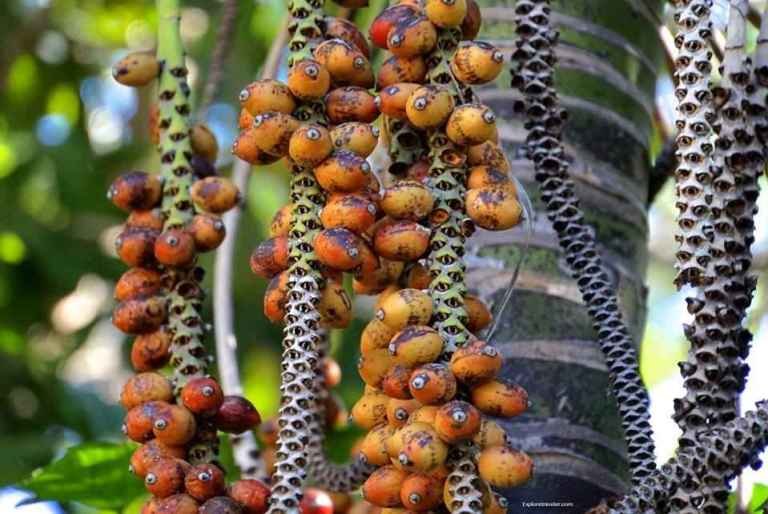
The Unique Kentia Palm Seeds Of Southern California
As you wander through the grounds, be sure to take in all the unique palms and flowers that grow in Southern California. The San Diego Zoo Grounds has many different palms, each with their own uniqueness. This one is known for it’s patterned bark and it’s strange looking seeds that grow on the outside of the tree.
This is a slow growing tropical palm that can make a wonderful house plant. It will quickly become a conversation piece. In the San Diego area, it is an outdoor treat for curious eyes, and inquiring minds.

The Skeleton Of A Python Is All Backbone
This is a giant Python! It is not a venomous snake or even an evil one, as we generally assume. If you look closely at the skeleton above you can see where he has had several broken ribs that healed. Pythons live in Africa, Asia, and Australia.They love the native savannas and rain forests of these areas. Pythons move while in a straight line, making their ribs very strong and stiff. Adult Pythons make a good meal for the larger Birds of Prey. Even leopards and sometimes lions get in on the action.
They hatch their eggs when it is time to reproduce. During the incubation period the Python keeps her eggs warm by coiling her body around her eggs. If she sees they are too cold, she does a shivering motion with her body to warm up the eggs. This is a lot of exertion, and afterwards she will not lay eggs again for three or four years. Once the eggs hatch, the babies are on their own. Then the life cycle begins all over again, with the babies trying to outsmart their predators.
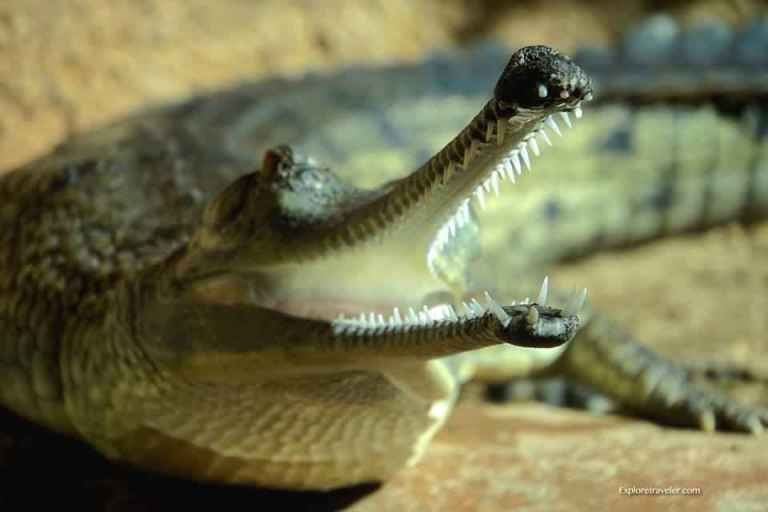
The Long Snouted Indian Gharial
This Long Snouted Indian Gharial has gone Jurassic at the San Diego Zoo in Southern California. This Gharial, with his 110 very sharp teeth and very long snout, is amazing at catching fish, thus he is often called the fish-eating crocodile. Fish is his main source of food. This member of the crocodile family spends most of his time in the water, though when cold, he pulls himself onto the bank and spends a few hours in the sun. He is one of the three different crocodiles that are native to India, Pakistan, and Nepal. The male Gharial has like a round knob or growth on the end of his slender snout. The Gharial having lived on earth for an estimated 65 million years, is now a critically endangered species.
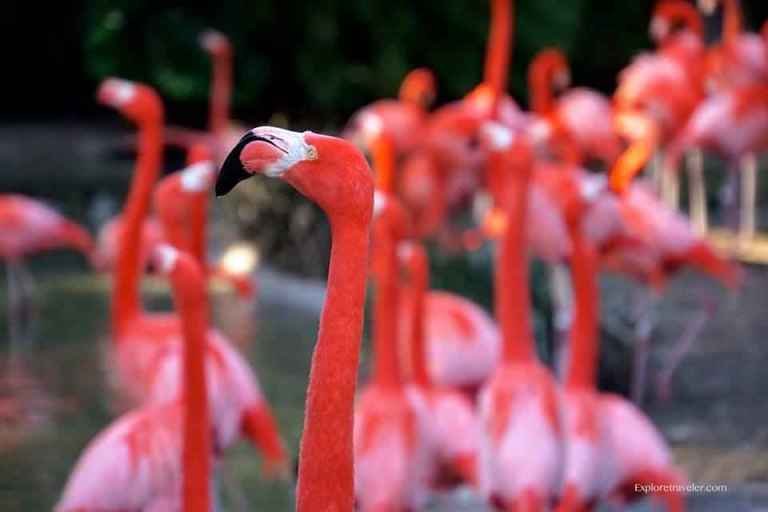
Flamboyant Flamingo At The Flamingo Lagoon
Flamingos are most at home in salty or caustic lagoons or very shallow lakes. These lakes are poisonous for most other animals, so they have little competition for the algae, diatoms, and those small crustaceans. This is perfect, as these tiny creatures are what they prefer to dine on. If ever there was a win-win situation, this is it!
The San Diego Zoo has one of these caustic lagoons, and it is the perfect environment for these beautiful giant birds. Like other Lagoons elsewhere, it is too salty and caustic for other birds or fish that might give competition for their favorite food supply. With that in mind, the Flamingos at the San Diego Zoo flourish in the Southern California Sun.
Their extremely long legs also allow the Flamingos to wade farther out into the water than other animals, and thus their selection of food is even greater. If you have ever watched a Flamingo fish for his food, you can not help but enjoy this unique and different concept in fishing. While holding their beak upside down, they begin taking in water. They take in water, animals and all, and then filter out the water with their built in water filter. All that remains are these tiny creatures and dinner is served.
These beautiful birds put on quite an airshow, when they travel in formation. Just imagine their long beautiful necks sticking straight out ahead, and their legs straight out behind. When they wave their wings, as they often do, the colors are spectacular.
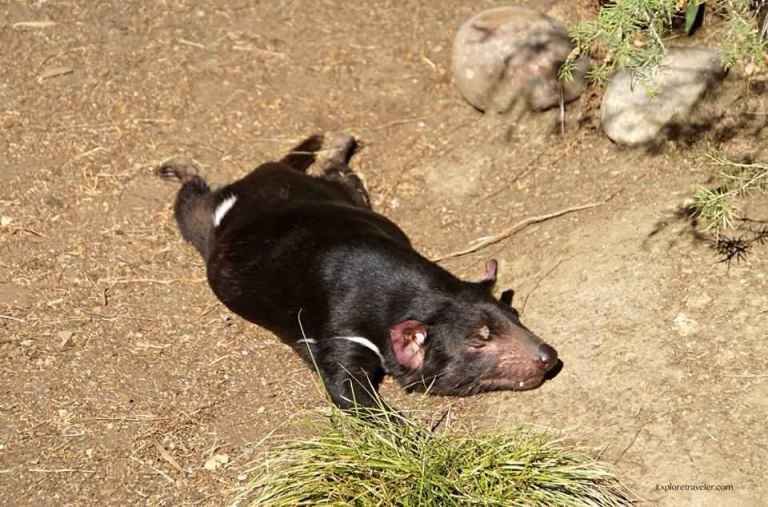
Tasmanian Devil At The San Diego Zoo
The Tasmanian Devil is a strange looking marsupial which lives in the grasslands and forests of Tasmania Island, Australia. Such a little fellow, but he has earned his name. He is similar in many ways to the rat in features, but watch out for his temper. He has sharp teeth and when he is mad he is vicious. He is known to have one of the sharpest bites in the animal kingdom.
Even though the majority of Tasmanian Devils prefer the grasslands and forests, you will find them throughout the island. Watch your step, as they like to sleep in empty caves, burrows that they run across, and under rocks or logs. The better they can hide, the happier they are. Such a combination of happy and snarly! They are nocturnal and so sleep all day and often go on long journeys at night. It is not unusual for them to travel up to 10 miles in a single night.
The Tasmanian Devil is highly endangered and is in grave danger of dying off due to a very deadly and transmissible cancer. Great care is being taken in the safekeeping, protection, and study of this little devilish critter with the terrible terrible temper at the San Diego Zoo. Be sure to check out this little fellow next time you are at the zoo.
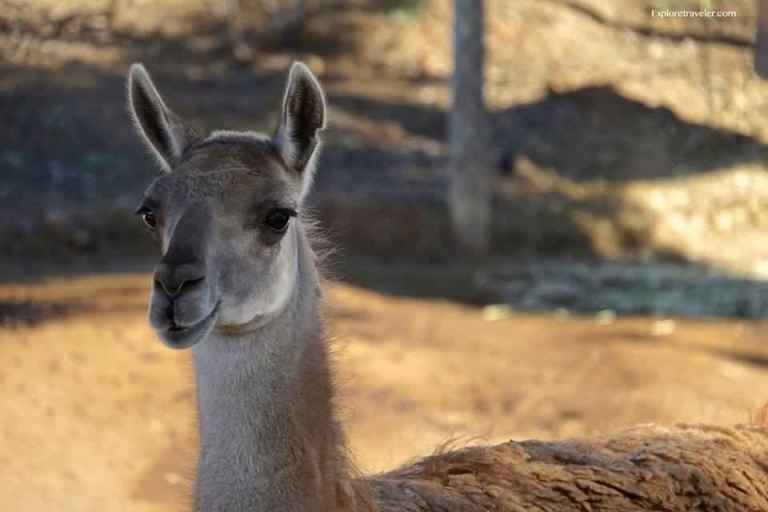
The South American Guanaco At The San Diego Zoo
Welcome to the home of the Guanacos, a close relative to the camel. Where as, camels are the work horses of the desert with coarse coats, the Guanaco is so very soft, has no humps, is smaller, and extremely graceful. They are beautiful with their light brown coats with white underbellies. Their tails are quite short, they have really long necks, and big ears that point straight up. Unlike camels that come from Africa and Asia, Guanacos come from South America. A Guanaco is much smaller than a camel and larger than other camelids, such as alpacas, vicunas, or llamas.
Guanacos live in groups with one dominant adult male, up to about 10 females, and all their young chulengos. Unattached bachelors form their own groups which may be 50 or more adult males. When a female Guanaco gives birth, her Chulengs are quite able to stand and walk. They have no issue with keeping up with the rest of the group shortly after birth.
If they were put on display at a beauty contest, they would surely come in first place. You haven’t seen beauty, until you check out the Guanacos that live at the San Diego Zoo.

Elephant Odyssey Showcases The Pleistocene Era Tar Pit
Showcasing California’s spectacular history during what is known as the Pleistocene Era, Elephant Odyssey tells the story of who these magnificent animals were that roamed Southern California. You will be able to discover the 40 species that went extinct during this time. This amazing exhibit was done together with The La Brea Tar Pits, The Western Center for Archaeology & Paleontology, and The San Diego Natural History Museum. Here you will learn the significance of the extinctions on today’s animal kingdom. When you see the most famous of the exhibits, the elephant, you will watch them in all there grandeur, as they mate, raise families, and play together. What an enlightening experience this will be for those who care about the animals of today. As we learn from the past, we will be better able to meet the challenges of today’s animal kingdom.
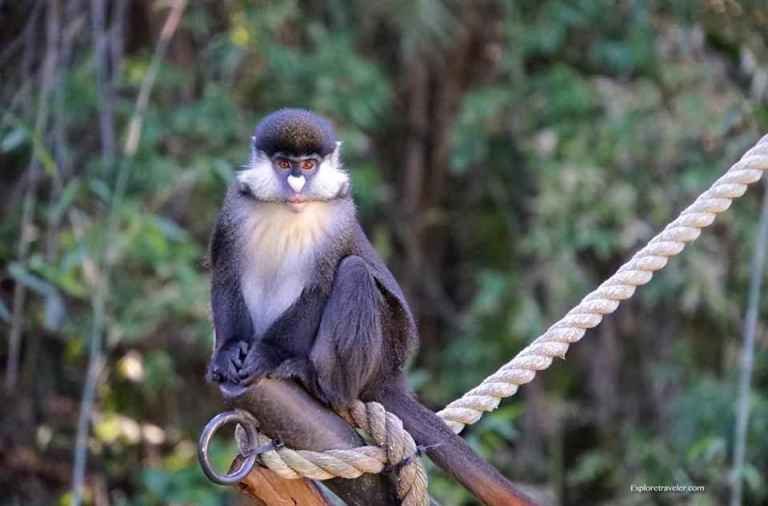
The Playful World Of The Schmidt’s Red-tailed Monkey
The Schmidt’s Red-tailed Monkey goes by several names, but the best description for this cute little fellow is this one. He has a beautiful red tail from which he gets his name. Other noticeable characteristics of this cute primate are his white nose and checks surrounded by a body of gorgeous black or dark grey fur. Like many other animals, he has what seems to be expanding checks so that he can both gather and store food. Sometimes he will need to store his food for months.
These cute little primates are indeed quite small. They usually have bodies that are only about one to two feet long, though his tale can be as long as 35 inches. Males are usually on the top of the scale, with females being very small indeed. The males can weigh from seven to ten pounds, where a female is only in the six to eight pound range. Their long red tales are not only beautiful, but they are used for balance when needed.

This majestic Heron actually calls the wetlands that are so common in North America and also Central America home. This graceful heron is the largest bird in North America and certainly the most spectacular. The Great Blue Heron stands tall at 36-54 inches and when they open those magnificent wings, they span from 66-70 inches. Can you imagine the skies of San Diego when they all decide to fly? The skies are filled with large dusty blue herons. What a spectacular sight!
The San Diego Zoo is one of the largest zoos in our country and certainly one of the cleanest and caring. Many endangered species call this huge zoo home, along with the researchers that are working day and night to prevent their names being added to those that are extinct. While we have given you 12 reasons to enjoy this spectacular zoo, the list of animals almost seems endless. These 12 are only some of our favorites. So next time you are in Southern California, be sure to join us for a relaxing visit to the residents of the San Diego Zoo.

ExploreTraveler has been creating travel articles, books, videos, and podcasts for several years now. It is our intention to bring our older material for others here to enjoy here on Steemit, and to create new material here as well. We invite you to click on our links to the original content, and to also follow us there as well. This post was originally posted on September 17,1918 at:
https://exploretraveler.com/happiness-abounds-at-the-san-diego-zoo-in-southern-california/
Twitter Page, ExploreTraveler
Facebook Page, ExploreTraveler
"Helping bring the world together one friend at a time. So travel
and discover that the world is full of wonderful people." - ExploreTraveler
We have a travel tip audio book that you can purchase at Audible --> Here
Happy Travels,
ExploreTraveler.com

© 2018 ExploreTraveler. All Rights Reserved
#Exploretraveler
Just wow, the quality of your photos and writing is outstanding, I just found your post surfing in Steemit. Your content is inspiring. Thanks and greetings from Argentina!
Thank you @procrastinador. We were doing shorter posts daily, but at the moment are doing larger ones about once a week or so.
good photos....
Thanks @rubyrose.
Congratulations @exploretraveler ! You received a 15.60% upvote from @kryptoniabot & @kryptonia for your task of 800 SUP Today.
Remember to receive votes from @kryptoniabot
Run a task on Kryptonia.*Join free here Kryptonia Account
Use the tags KRYPTONIA or SUPERIORCOIN in your Steemit post.
Delegate to the Kryptonia Upvote by clicking links: 10SP , 50SP , 100SP , 500SP , 1000SP
Due to an increased amount of tasks, we have changed up the voting power to evenly spread out the Upvote amount.
thank you
Congratulations! Your post has been selected as a daily Steemit truffle! It is listed on rank 4 of all contributions awarded today. You can find the TOP DAILY TRUFFLE PICKS HERE.
I upvoted your contribution because to my mind your post is at least 13 SBD worth and should receive 219 votes. It's now up to the lovely Steemit community to make this come true.
I am
TrufflePig, an Artificial Intelligence Bot that helps minnows and content curators using Machine Learning. If you are curious how I select content, you can find an explanation here!Have a nice day and sincerely yours,

TrufflePigThank you
Interesting
Glad you found it interesting.
such beautiful pictures.
Glad you enjoyed @nypho.
Great post
Thank you @cryptocheta.
animals on the pictures are all not familiar, thank you for sharing
Your welcome @felicitas.
tnk u for d info. i learned a lot about animals on this post
Your welcome @ryxfest213.
Good to know thanks for sharing @yrrems
Your welcome @platyrhodon.